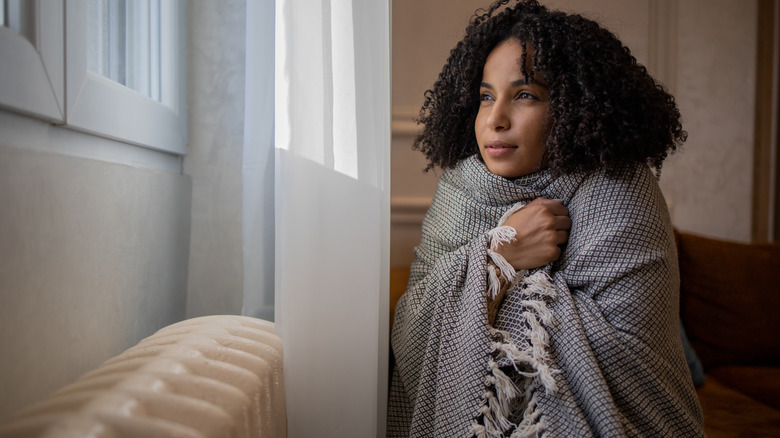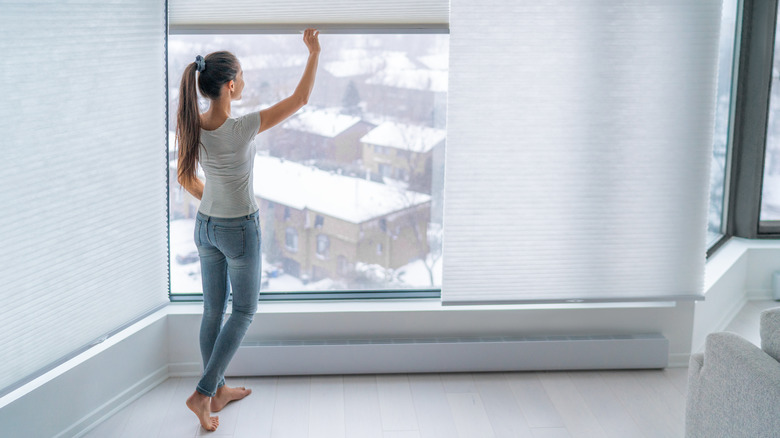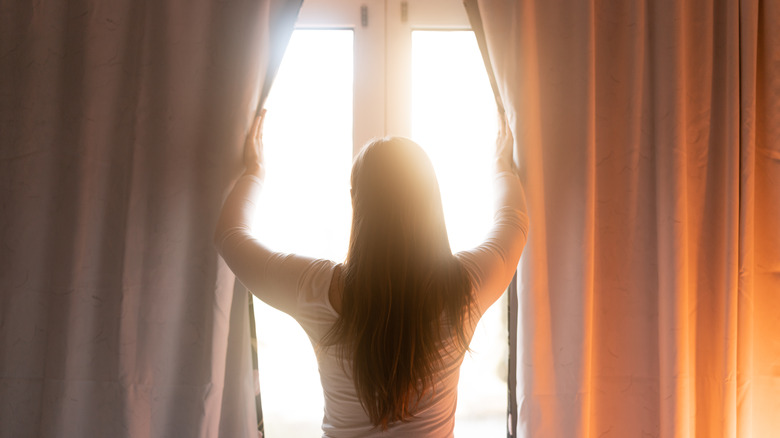How To Warm Up Your House This Winter Without Spending An Extra Dime
It can get so cold during the winter months that you're left wondering why your heating system isn't keeping the home as warm as you would like. You may be tempted to head to your thermostat to raise the temperature a few notches, but your energy bill will unfortunately rise right along with it. One alternative to cranking up the heat is to identify the places where warmth is escaping your home. According to the United States Department of Energy, around 30% of the heat in a house escapes through its windows.
Simply keeping your windows covered can help keep heat inside your home. Window coverings like shutters, cellular shades, and roller shades effectively preserve heat. In fact, the United States Department of Energy reported that using properly installed cellular shades can help save about 10% of your home's heating energy. Exterior window covers like shutters and shades can also help keep the temperature in your home from dropping. And curtains are not just great for decor, but can also keep your home warm. Covering your home's windows is a simple but often overlooked way to keep the cold out.
Adjust your window coverings to keep warmth inside
Most windows in homes contain blinds or other operable window coverings. Unfortunately, not many people are aware of how adjusting these window coverings can have a significant impact on the internal temperature of their homes. According to the United States Department of Energy, 75% of resident window coverings are not adjusted at all. Homeowners leave them in the same position each day. They may hold the belief that window coverings would only ever need to be opened or shut to protect privacy or let sunlight in.
You may already know that you can help your home stay warm in the winter by opening your blinds up in the morning time. Sunlight will shine through and heat up your home. Just like leaving windows exposed in the daytime lets heat inside, making sure they are covered throughout the night will help keep heat in and cold out. Insulated cellular shades are among the many window coverings that provide an effective additional layer of protection against extreme temperatures. Simply shut insulated cellular shades at night to help keep your home warm. The United States Department of Energy shared that these shades can reduce heat loss by 40%.
Other window coverings can help you keep the cold out
Curtains are another common type of window covering that can keep your home warm. Unless you were already aware of how to install curtains to optimize energy efficiency, you will likely need to make a few adjustments to the curtains you already have hung up in your home to get them ready to go. First, your curtains must be floor length to effectively keep heat in and cold out. You will also need to attach them to the wall. This can be done with a Velcro or magnetic fastener. Sealing your curtains to the wall with fasteners will prevent air from seeping in or out.
Keep energy efficiency in mind when deciding on what kind of curtains to purchase. Blackout curtains are thicker and do a better job of insulating a home. Although these curtains do not let a lot of light in, you can simply open them up in the morning to let sunshine travel through your windows and have a warmer house this winter. A curtain made of tight-weaved fabric can also help your home stay warm if you are not a fan of blackout curtains.


